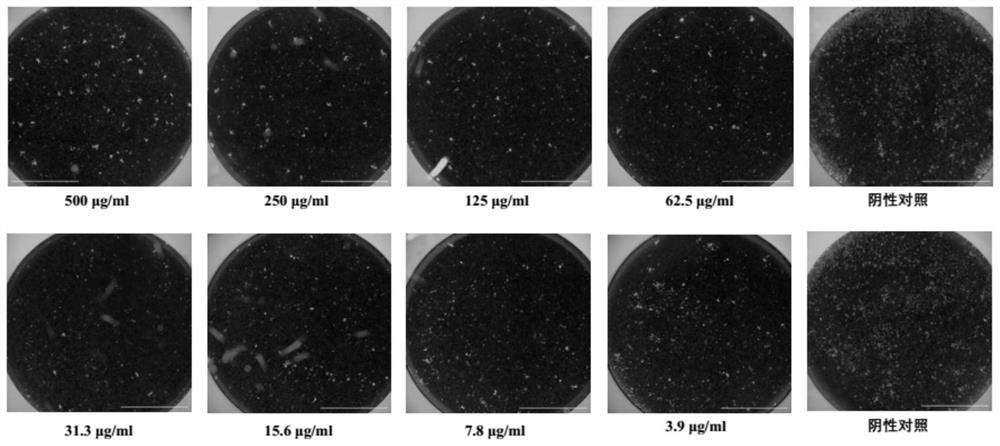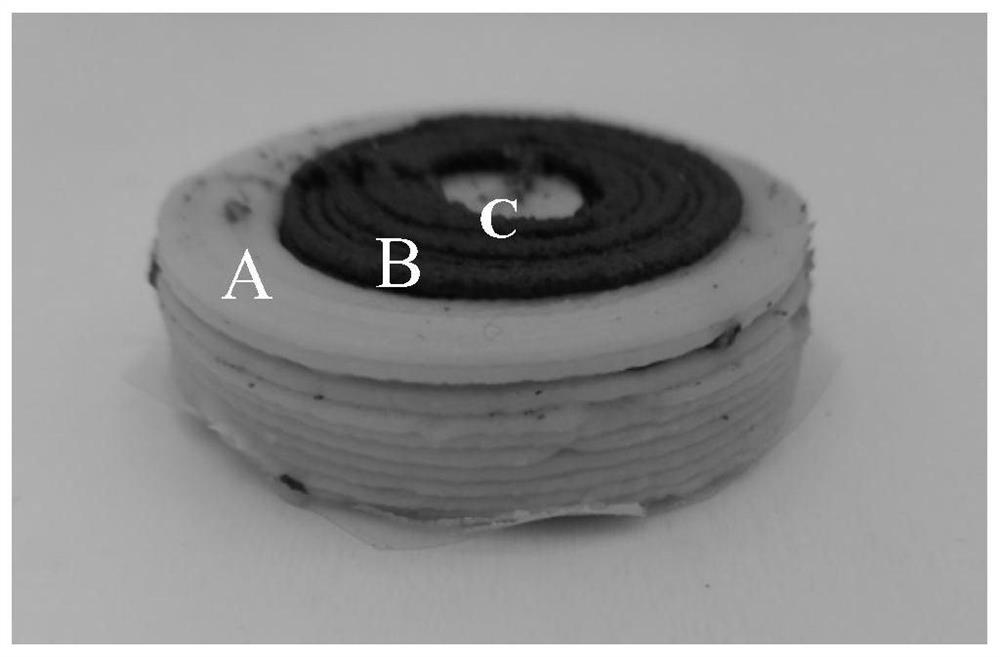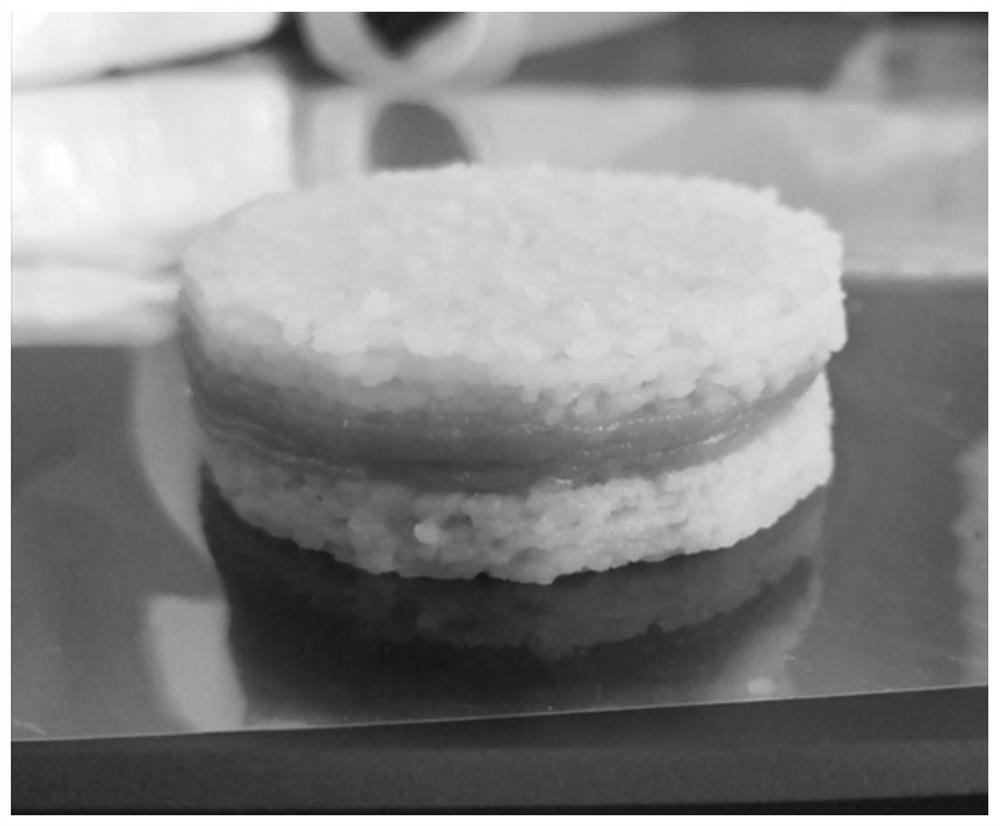Method for preparing functional fish leisure food through 3D printing
A 3D printing and functional technology, applied in the field of food processing, can solve the problems that food materials are in the experimental research stage, and achieve the effects of improving appearance and nutritional compatibility, improving gel properties, and weakening oil oxidation
- Summary
- Abstract
- Description
- Claims
- Application Information
AI Technical Summary
Problems solved by technology
Method used
Image
Examples
Embodiment 1
[0060] Embodiment 1 prepares the method for sea cucumber polysaccharide
[0061] Sea cucumbers (Stichopus japonicus) were washed, boiled, drained, cut into small pieces, and freeze-dried. The freeze-dried samples were soaked in acetone at 4°C for 24h, and dried at room temperature. Taking 1g of freeze-dried sample as an example, add 30mL of 0.1mol / L sodium acetate buffer solution (pH 6.0), 100mg of papain (specific enzyme activity 2units / mg), 48mg of ethylenediaminetetraacetic acid and 18mg of cysteine, vortex Mixed, shaken in a water bath at 60°C for 24 hours, centrifuged the reaction mixture (6000g, 15min, room temperature), and took the supernatant. 1.6 mL of 10% cetylpyridinium chloride solution was added to the supernatant, and after standing at room temperature for 24 h, the precipitate was collected by centrifugation (8000 g, 15 min, room temperature). Dissolve the precipitate in 15mL 3mol / L NaCl-ethanol (100:15v / v) solution, then add 30mL 95% ethanol solution, place ...
Embodiment 2
[0063] Embodiment 2 determines the structural characteristics and composition of the sea cucumber polysaccharide prepared in embodiment 1
[0064] use 1 Structural properties and purity detection of sea cucumber polysaccharides by H NMR;
[0065] Gel permeation chromatography was used to detect the molecular weight of sea cucumber polysaccharides;
[0066] Using gelatin turbidimetry to detect the sulfate content of sea cucumber polysaccharides;
[0067] Using high performance liquid chromatography + PMP derivatization method to detect the composition of polysaccharides and monosaccharides in sea cucumbers;
[0068] Detection of polysaccharide functional groups in sea cucumbers by Fourier transform infrared.
[0069] The results showed that the sea cucumber polysaccharide contained fucoidan sulfate and fucosylated chondroitin sulfate, the molecular weight of fucoidan sulfate was > 670kDa, and the molecular weight of fucosylated chondroitin sulfate > 179kDa; the sulfate conte...
Embodiment 3
[0070] Example 3 Using a pseudovirus model to evaluate the anti-new coronavirus effect of sea cucumber polysaccharides
[0071] The full-length sequence of the gene encoding the HCoV-19 spike protein was cloned into the pCAGGS vector for pseudovirus production, and the constructed recombinant vector was called pCAGGS-HCoV-19-S. The successful construction of pCAGGS-HCoV-19-S was confirmed by DNA sequencing. The pCAGGS-HCoV-19-S and pNL4-3 plasmids were co-transfected into HEK 293T cells, and after 48 hours of culture, the supernatant containing the SARS-CoV-2 pseudovirus was collected, and 50% of the pseudovirus was determined by infecting Huh7 cells Tissue cell infectious dose (TCID) 50 ).
[0072] Using the SARS-CoV-2 pseudovirus model to evaluate the anti-new coronavirus effect of sea cucumber polysaccharides, the specific steps are as follows:
[0073] (1) Select Huh7 cells in good growth state, trypsinize, plate in 96 wells, and culture overnight, until the cells reach...
PUM
 Login to View More
Login to View More Abstract
Description
Claims
Application Information
 Login to View More
Login to View More - R&D
- Intellectual Property
- Life Sciences
- Materials
- Tech Scout
- Unparalleled Data Quality
- Higher Quality Content
- 60% Fewer Hallucinations
Browse by: Latest US Patents, China's latest patents, Technical Efficacy Thesaurus, Application Domain, Technology Topic, Popular Technical Reports.
© 2025 PatSnap. All rights reserved.Legal|Privacy policy|Modern Slavery Act Transparency Statement|Sitemap|About US| Contact US: help@patsnap.com



